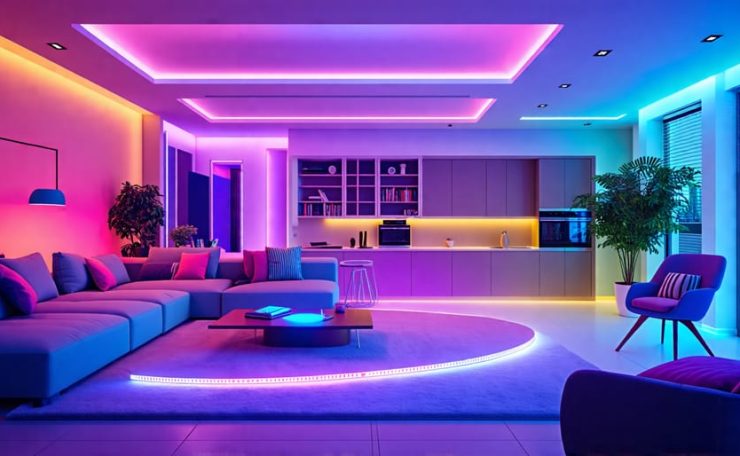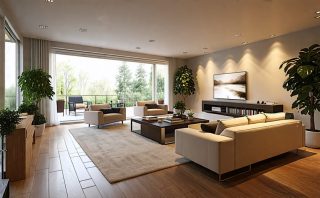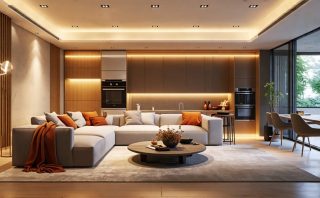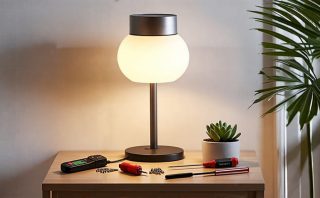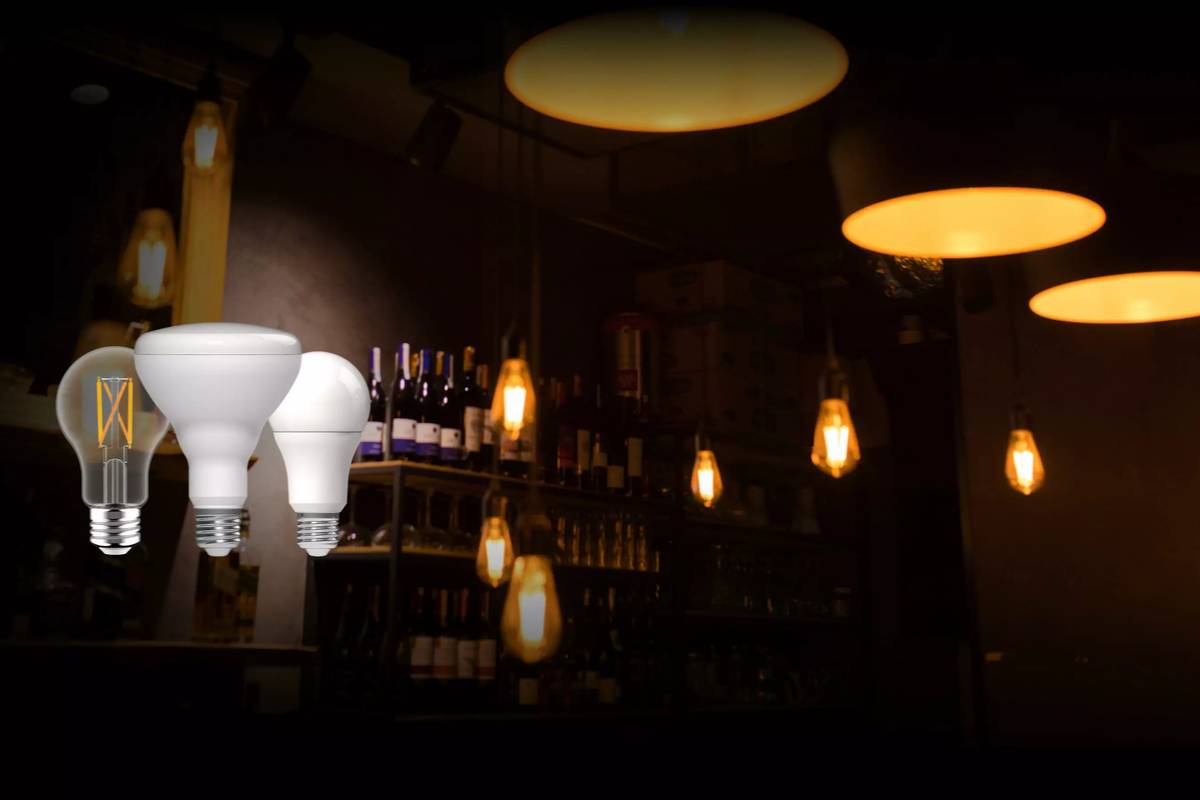Transform your environment by integrating smart lighting systems that enhance convenience, energy efficiency, and ambiance. Begin by selecting the right fixtures and brands, such as smart lighting from DALS, known for innovation and quality. Plan your system layout by mapping key areas that benefit most from dynamic lighting, like living rooms, kitchens, or conference halls, ensuring each space has tailored illumination. Leverage automation and scheduling features to optimize energy use and create a varied atmosphere, adjusting light levels based on time, activity, or mood. Finally, connect your smart lights to a central hub or voice assistant, enhancing control and accessibility with simple commands or mobile applications, creating a seamless, modern lighting experience.
Understanding Smart Lighting: A Brief Overview
Smart lighting represents a cutting-edge advancement in the realm of illumination, offering enhanced control and increased energy efficiency for a variety of environments. At its core, smart lighting involves the integration of lighting products with advanced technology to allow for customizable and dynamic control over lighting conditions. A key component of these systems is the smart bulb, a versatile piece of technology that goes beyond basic on-and-off functionality, allowing users to adjust brightness, change colors, and even set schedules, often through a smartphone app or voice commands.
To bridge the connection between smart bulbs and the rest of your network, smart hubs are often employed. These serve as central points that communicate between your smart lighting devices and the internet, facilitating seamless control. Some systems may also integrate directly with existing home automation platforms, eliminating the need for separate hubs. This integration extends to compatibility with virtual assistants like Amazon Alexa or Google Home, providing a hands-free experience and the ability to integrate with broader smart home systems.
Moreover, smart lighting solutions offer various integrations that enhance their functionality. These can include synchronizing lights with music or alert systems, thereby playing a role in enhancing mood or providing visual notifications. Such flexibility is especially appealing to homeowners, interior designers, and commercial business owners who are keen on efficient and aesthetic lighting solutions.
Overall, smart lighting empowers users with unprecedented control and customization, aligning perfectly with modern needs for efficiency, comfort, and connectivity in our living and working spaces.
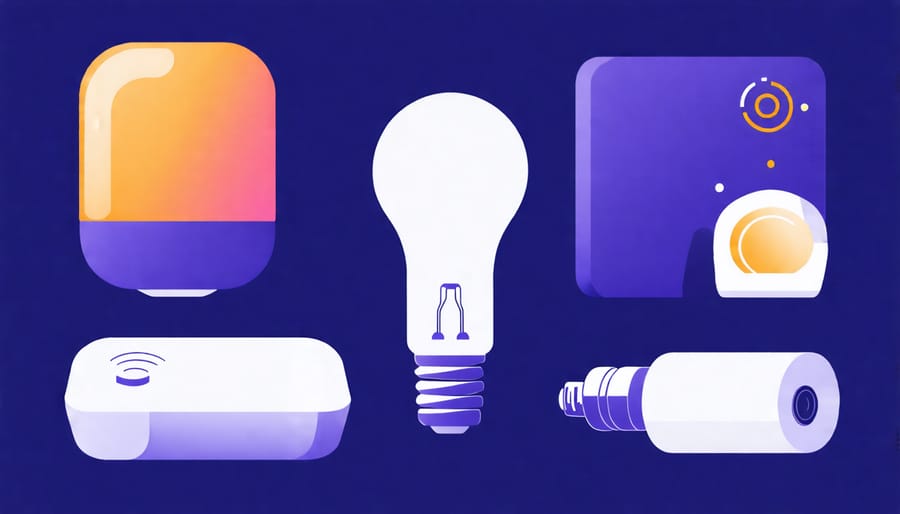
Key Benefits of Smart Lighting in Interior Design
Energy Efficiency
Smart lighting solutions can significantly enhance energy efficiency, making them an attractive option for homeowners and professionals alike. By utilizing advanced technologies such as LED bulbs, motion sensors, and automated scheduling, smart lighting systems reduce unnecessary energy consumption and lower utility costs. LED bulbs, for instance, consume less power and last longer than traditional bulbs, providing cost-effective illumination without compromising quality. Additionally, these systems can be programmed to adjust lighting levels based on daylight or occupancy, ensuring lights are used only when needed. This targeted approach to lighting not only cuts down on energy bills but also contributes to a more sustainable environment, making smart lighting a wise investment for residential and commercial applications.
Ambiance and Mood Setting
Smart lighting offers a transformative experience for enhancing any space’s aesthetic appeal by allowing precise control over light hues and brightness. By seamlessly adjusting light colors, you can create the perfect ambiance for any occasion—warm tones for relaxation or cooler hues for focus and productivity. Brightness control further empowers you to set the ideal mood, whether for an intimate gathering or a bright, energized environment. This dynamic capability not only elevates the visual experience but also adapts to the functional needs of any room, offering a sophisticated solution tailored to homeowners and professionals alike seeking excellence in lighting design.
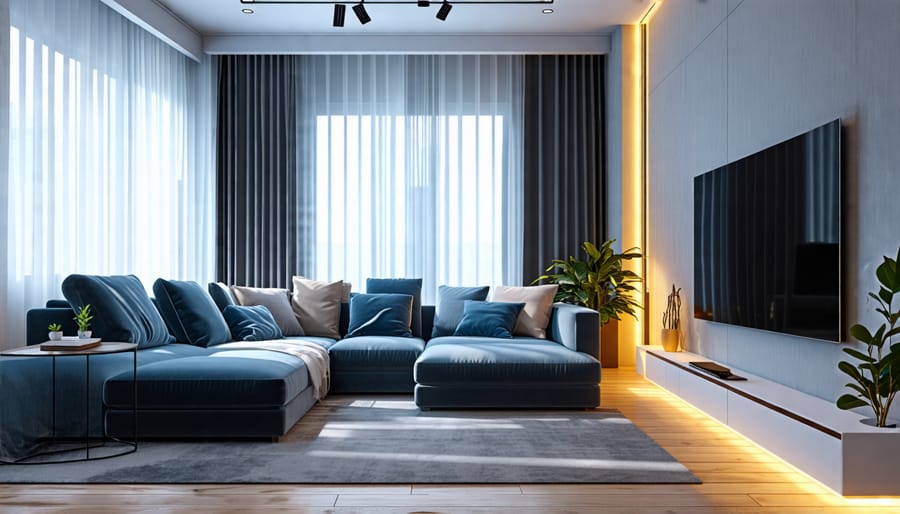
Convenience and Control
Smart lighting setups offer unparalleled convenience and control, transforming how we illuminate our spaces. Through intuitive apps, homeowners can effortlessly manage their lighting from anywhere, tailoring brightness and color to suit any occasion. Voice command integration with platforms like Amazon Alexa and Google Assistant further enhances this convenience, allowing users to adjust lighting with simple spoken instructions. This seamless control system not only simplifies daily routines but also enhances home security, creating the illusion of presence when needed. For commercial settings, remote management offers operational efficiency and energy savings. Smart lighting truly redefines user experience with convenience and precision.
Components of a Smart Lighting Setup
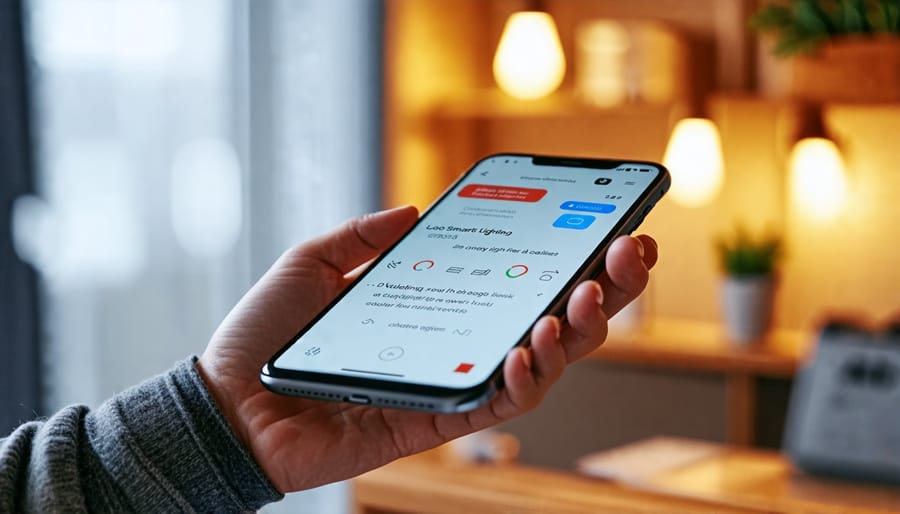
Smart Bulbs
Smart bulbs are a key component in a modern smart lighting setup, offering versatility and efficiency. Among the myriad of options, Philips Hue stands out for its robust integration with platforms like Amazon Alexa, Google Assistant, and Apple HomeKit. These bulbs offer a wide spectrum of colors and are known for their reliability. LIFX, on the other hand, provides brilliant brightness and vibrant color options, with bulbs that connect directly to Wi-Fi, eliminating the need for a hub.
For budget-conscious consumers, Wyze bulbs provide smart features like voice control and scheduling at an accessible price point. They might lack the color variety of higher-end models, but they offer substantial value. If energy efficiency is a priority, Sengled smart bulbs are a great choice, offering long-lasting performance with energy-saving capabilities.
Switching to smart bulbs not only enhances the atmosphere of your living spaces but also provides the convenience of remote control and automation, making them a smart investment for anyone looking to modernize their lighting system.
Smart Hubs
Smart hubs play a pivotal role in a smart lighting setup by serving as the central control point, seamlessly managing communication between your smart bulbs and other smart devices. They integrate various smart technologies, allowing users to control their lighting systems via a single app or voice commands through platforms like Amazon Alexa, Google Assistant, or Apple HomeKit. Choosing the right hub can enhance convenience and system functionality.
Popular smart hubs include the Philips Hue Bridge, known for its reliability and compatibility with an extensive range of lighting products. It offers robust support for automations and scenes using Zigbee technology. Another contender is the Samsung SmartThings Hub, which provides broader compatibility as it supports both Zigbee and Z-Wave devices, making it an excellent choice for comprehensive smart home integration.
While each hub has unique advantages, selecting one that aligns with your existing systems and future expansion plans is crucial. A smart hub ensures not only energy efficiency and ease of use but also expands the potential of your smart lighting setup, enhancing ambiance and functionality across residential or commercial spaces.
Integration with Smart Home Devices
Smart lighting systems seamlessly integrate with other smart home devices to form a cohesive automation ecosystem. Through platforms like Google Home, Apple HomeKit, or Amazon Alexa, these lighting solutions connect with thermostats, security systems, and cameras to enhance convenience and energy efficiency. For instance, integrated smart lighting can adjust brightness based on the time of day, sync with motion detectors to illuminate entryways, and even simulate occupancy when you’re away. This sophisticated integration not only elevates ambiance but also contributes to the overall security and energy savings of your space. For more on this synergy, explore our detailed guide on integrated smart lighting.
How to Plan Your Smart Lighting Design
Assessing Your Needs
To create an effective smart lighting setup, begin by assessing your specific needs and goals. Consider factors such as the purpose of each room, desired ambiance, and functionality. For instance, homeowners might prioritize mood lighting in living areas, while business owners could focus on energy efficiency and security through automated systems. Event planners might need adaptability to cater to different themes and moods.
Evaluate the current layout and natural light sources, as this will affect the number and types of smart lights required. Think about integrating motion sensors or voice control for added convenience. If you’re considering a large-scale installation, consulting with a professional can provide personalized recommendations and detailed product comparisons tailored to your space.
Additionally, weigh the benefits of different technologies, like LED or color-changing bulbs, and ensure compatibility with existing smart home devices. By thoroughly understanding your requirements, you can optimize your setup for enhanced efficiency, comfort, and style, aligning with both aesthetic and practical goals.
Creating a Customized Plan
Creating a customized plan for your smart lighting setup involves understanding your space’s specific needs and themes. Begin by assessing each room’s function and design aesthetic to determine the ideal lighting scenarios. For homeowners, this means considering the ambiance you wish to create, whether it’s a warm, inviting living room or a vibrant kitchen. Interior designers and architects can utilize smart lighting to highlight architectural features or complement furniture pieces. For event planners, programmable lighting can enhance themes and moods tailored to each occasion.
When selecting products, balance technology with decor compatibility and functionality. Opt for adjustable fixtures and bulbs that allow color temperature changes and dimming capabilities. This flexibility ensures you have the right lighting for every mood and purpose. Consult with smart lighting specialists to leverage technology that aligns with your vision.
Integrating these elements into a cohesive setup unlocks the magic of smart lighting, enhancing both aesthetics and functionality. With careful planning, your space will not only look stunning but also be efficiently lit for every occasion.
Selecting Products and Providers
Selecting the right products and working with reputable providers is essential for a successful smart lighting setup. Start by identifying your specific needs, whether you aim to enhance aesthetics, improve energy efficiency, or upgrade functionality. Look for products that offer compatibility with your existing smart home systems and support features like dimming, color changing, and voice control, which are crucial for creating a personalized lighting experience. Choose providers with a solid track record and excellent customer reviews to ensure reliability. Consulting with lighting design companies can provide valuable insights and enable you to explore tailored solutions that align with your space and budget. Remember, a well-planned choice in products and providers ultimately leads to an efficient, high-quality lighting system that complements your environment.
Common Challenges and Solutions in Smart Lighting
Setting up smart lighting can present several challenges, but each can be effectively addressed with expert solutions. One common issue is connectivity. Many users face problems when smart lights are unable to connect to Wi-Fi networks, potentially due to distance or network congestion. To resolve this, ensure your Wi-Fi router is centrally located, and consider using a mesh network to eliminate dead spots.
Another challenge is compatibility with existing systems. Smart lighting might not seamlessly integrate with all devices, particularly older smart home ecosystems. Before purchasing, verify the compatibility of your smart lighting with your existing devices and platforms.
Complex setup processes can also deter users. Many smart lighting systems require intricate initial setups, which can be confusing. Simplify this by following the manufacturer’s instructions closely and utilizing available online resources or expert consultations.
Finally, data privacy concerns with smart lighting devices that collect usage information can be significant. Protect your data by selecting reputable brands that offer robust privacy policies and provide options to customize data-sharing settings.
By addressing these challenges proactively, you can ensure a smooth transition to a smart lighting system, enhancing convenience and efficiency in your living or working spaces.
Conclusion
Investing in a smart lighting setup offers substantial benefits, transforming any space into a more efficient, comfortable, and aesthetically pleasing environment. By incorporating smart lighting, homeowners and professionals can enjoy energy savings, remote control, automation, and customizable lighting experiences. Planning a smart lighting system involves assessing the space’s needs, selecting compatible devices, and outlining a control strategy that integrates seamlessly into existing systems. Embrace smart lighting to elevate the ambiance and functionality of your spaces, creating adaptable environments that respond to different activities and moods. Consider personalized consultations to optimize your lighting design and maximize the advantages of smart lighting technology.

